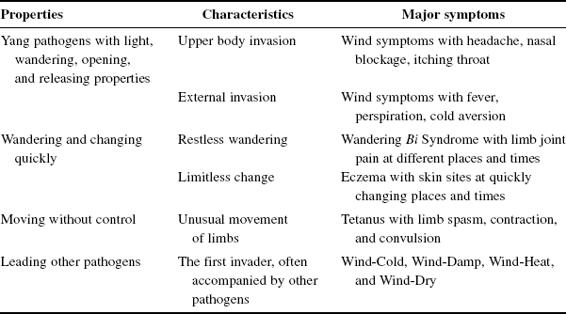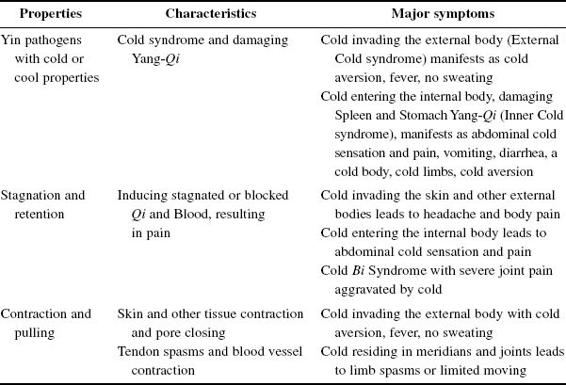It is most common to get Cold diseases in winter, although they may occur in other seasons. People may not keep warm enough, especially when in the rain, getting the feet wet, or sweating while being exposed to wind. There are two types of Cold diseases, depending on the location and the severity of the disease. The external Cold syndrome refers to the Cold resting in the skin, affecting the Defensive Qi. The internal Cold syndrome refers to the Cold resting in the Zang-Fu, affecting the Yang Qi (vital energy). Cold has the following characteristics:

| (1) | Cold, which belongs to Yin, weakens Yang Qi. When Cold invades: | |
| • | the body’s surface, it weakens Defensive Qi. | |
| • | the Body’s interior, it weakens Yang Qi, which loses its functions of warming, transforming energy, and of protecting the body from Cold syndromes. | |
| • | the Skin surface or Defensive Qi, the symptoms are aversion to cold and anhidrosis. | |
| • | the Spleen and the Stomach (and Spleen-Yang), the symptoms are Cold pain in the stomach and abdomen, vomiting, and diarrhea. | |
| • | the Shaoyin meridian, it damages the Heart and Kidney Yang, and shows symptoms of aversion to cold, lying down and curling up (fetal position), little energy, cold limbs, diarrhea with undigested food, excessive light-colored urine, and an indistinct weak pulse. | |
| (2) | Cold coagulates. Yang-Qi warms and moves forward our Qi, Blood, and Body Fluid to promote free and continuous circulation. When Cold coagulates in: | |
| • | Yang-Qi, circulating Qi, Blood, and Body Fluid are obstructed and blocked meridians may result in pain. | |
| • | Zang-Fu, pain occurs in the chest and abdomen. | |
| • | Muscles and joints, pain occurs in them. | |
| (3) | Cold contracts. Cold belongs to Yin and can slow Qi movement, contracting the skin, limbs, and joints. When Cold contracts in: | |
| • | the Skin, pores close, withhold Defensive Qi, and produce the following symptoms: cold aversion, anhidrosis, and papules. | |
| • | limbs and joints, tendons and vessels are affected and the symptoms are headache, somatic pain, limb rigidity, and spasms. | |


